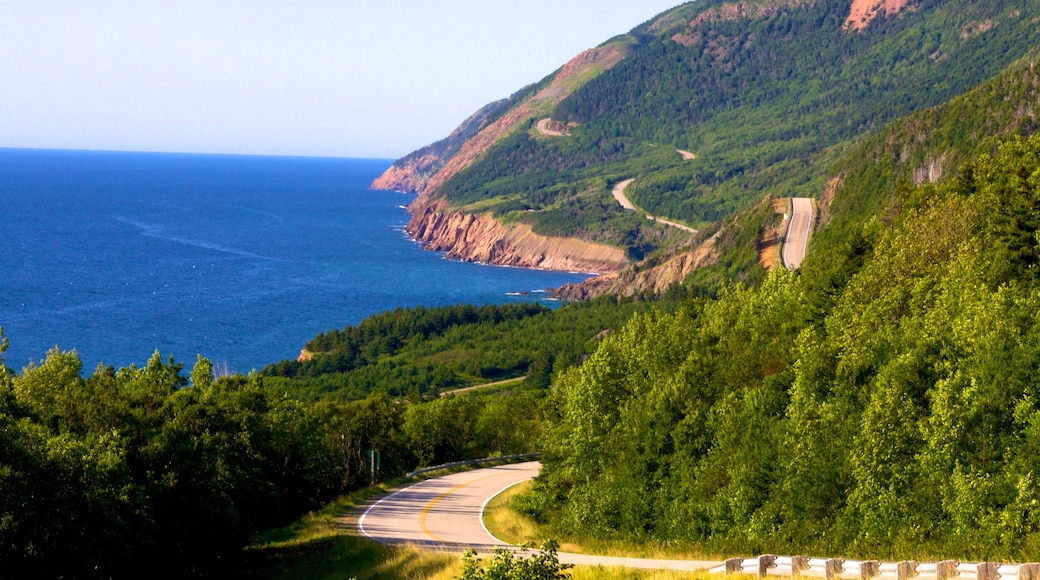Explore Cape Breton Highlands National Park and find deep river canyons, steep cliffs, beaches, forests and mountains. The diverse wilderness is set between the Atlantic Ocean and the Gulf of St. Lawrence and incorporates part of the Cabot Trail, a long scenic highway.
Driving or cycling the Cabot Trail is a great way to see the park. You will travel along the park’s coastlines and over hills. Stop at the many lookout points to admire the beautiful scenery. Experience the natural surroundings by taking one of the hiking trails, ranging from gentle walks to challenging treks. Some of the park’s 26 routes are suitable for cyclists.
Follow the trails through thick forests to more lookout points. As you make your way through the trees, along coastal paths and by rivers, see how many examples of the local wildlife you can spot. There are approximately 230 species of birds, including bald eagles and hawks. Look for beaver, moose, raccoon and the elusive Canadian lynx.
Go to cliff-top viewing points to search for dolphins, seals and whales. July to October is the best time for whale spotting, especially from the Mackenzie Mountain Look-off and Lakie’s Head Look-off.
Swim in the cool waters of the park’s freshwater lakes and Atlantic Ocean beaches. Warren Lake is the largest lake, while Black Brook Beach is one of several places with saltwater and freshwater swimming areas.
Cape Breton Highlands National Park sits on the northern peninsula of Cape Breton Island. It is a 2-hour drive from Sydney and about a 5-hour drive from Halifax. Stay overnight at one of eight campgrounds, which are open from May to October. Additional accommodation is available at the park’s villages and communities, including Ingonish, Neil’s Harbour and Pleasant Bay.
The park is open year-round, although heavy winter snowfall restricts access to some roads and trails. Visit the park’s website for details of entry and camping fees.









